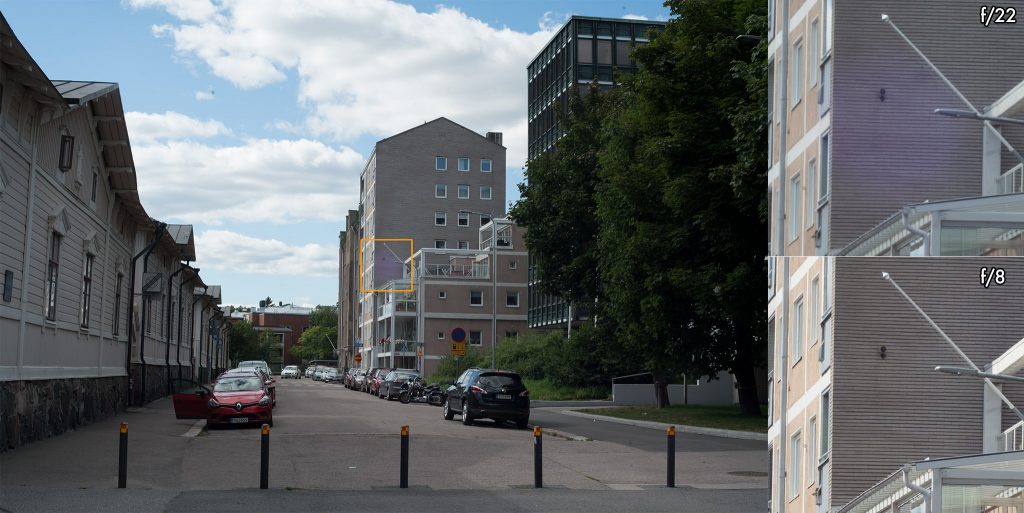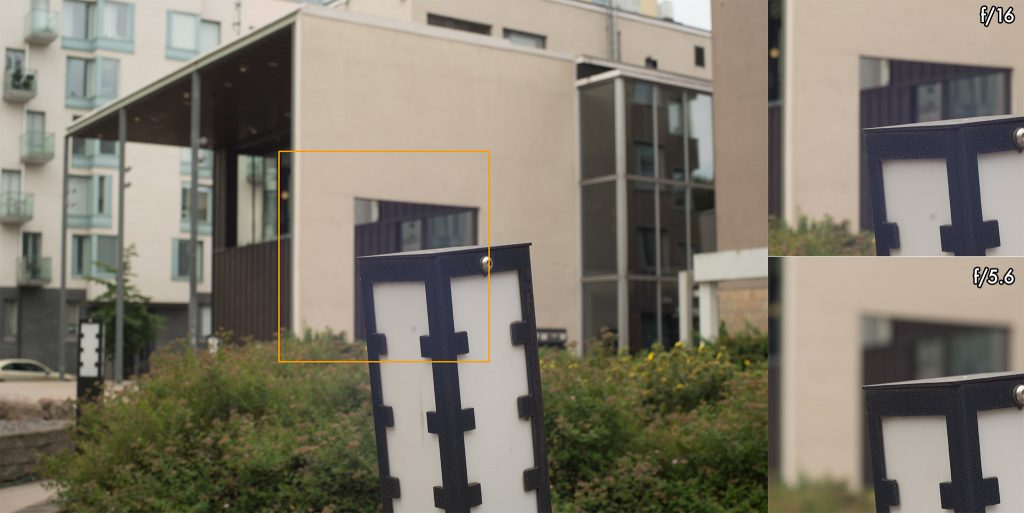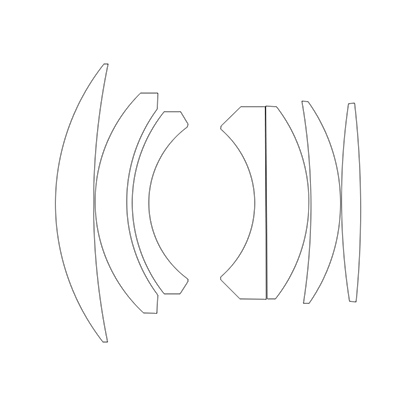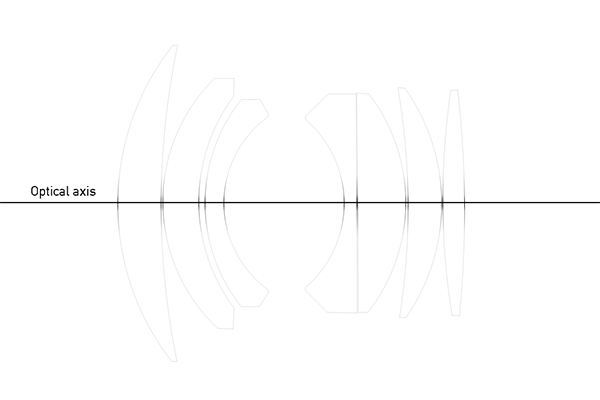Pekka Buttler, August-November 2021
Introduction
The topic of this article are ghosts, but not your typical ghosts. Typical ghosting (see this JAPB article) takes the shape of one or more coloured/bright blobs and is caused by that a bright light source within the lens’ image circle produces some reflections within the lens, leading to that the typical ghost is actually a fainter copy of the light-source, rendered onto a position other than that of the bright light-source. Typical ghosts are therefore dependent upon you having a source of very bright light somewhere within your lens’ image circle.
This article however is concerned with a type of ghost that appears in a picture without any significantly bright light source within the image circle (or a anywhere in the vicinity). This is why I refer to this type of not-typical ghost as an atypical ghost (you’re free to suggest a better name).
Before we go on, one thing will have to be said: Folks, compared to all other articles in this article series, this is a somewhat different kind of article. It’s different because of two reasons. Firstly, it is a relatively rare aberration as I’ve only found it to affect a handful of lenses (out of hundreds of lenses tested). Secondly, it’s an oddball article because … well, quite frankly I have not found a single decent attempt to investigate this phenomenon/aberration online. This also means that – unlike the other articles in the series, that are largely based on the judicious use of online sources – this article is primarily based on my own research (primarily: discussions with people who know this better than me).
Examples

(Right click and open in new tab to view larger version)

(Right click and open in new tab to view larger version)

(Right click and open in new tab to view larger version)
Visual characteristics
You will by now have noticed some things about atypical ghosts. Firstly, there’s always only one of these, and it always resides smack in the middle of the frame. Secondly, it is roughly circular, and becomes more pronounced (and smaller) as the aperture is closed down. Thirdly, it visibly affects images only when the aperture is closed down past f/11. Finally, while the atypical ghost’s coloration is not precisely uniform, it does tend to show up (in all lenses I’ve seen) as a violet-tinted blob.
Causes
Another thing you may have noticed from these images is that these can by no means be typical ghosts. In both examples 1 and 3 there is bright sunshine, but the sun is nowhere near the image circle, while in image 2 the sky was overcast. So what is going on here?
If you’ve already read the JAPB article on ghosting (and veiling), you’ll know that typical ghosts are the result of those internal reflections that are caused by bright light sources. As these images contain no bright light sources, something else must be happening.
Firstly, it’s important to understand that while bright light sources (e.g. the sun) has the potential to create a very visible ghosting blob, that does not mean that other light sources (such as white clouds or a light-coloured wall on a bright day) could not also cause ghosts. The reason such ghosts mostly stay ‘under our radar’ is twofold: Firstly, they do not emanate from point light sources, and therefore typically tend to produce larger, less distinct-bordered (typical) ghosts. Secondly, as such light sources are orders of magnitude fainter, the likelihood of such a ghost becoming visible in a photograph is very close to 0. But in these cases, there is something that produces a visible ghost even though there are no strong point-light sources within the image circle.
Let us look at the lens schematic of one of those lenses affected (although most schematics of similar-spec lenses look very similar to the untrained eye):

As you can plainly see, such a lens constitutes an assemblage of curved air-glass interfaces, the purpose of which is the bending of various incoming rays of light so that an image that represents the lens’ intended field of view (e.g. 45° for a standard lens) is projected onto the film/sensor plane.
But, and here’s the interesting thing: all those curved air-glass interfaces and the gymnastics that they force light rays to perform are really relevant only for all those rays that do not come along the optical axis. Along the optical axis (assuming no significant decentering), the light path is absolutely straight. And this is a good thing, in the sense that for all those rays that are dead centre in the frame, very little bending needs to be done. At least not at minimum aperture 1.
But what that invariably leads to is that – for all intents and purposes – there are no curved air-glass interfaces along the optical axis. Instead, along the optical axis, the curvatures of various lens elements is basically non-existent. And when you keep in mind that every air-glass interface acts as a mirror a percentage (5% for uncoated lenses, 1% or less for coated lenses), what you have is an assemblage of (mostly transparent), perfectly parallel mirror surfaces.

And just as in a hall of mirrors, or in the body of a guitar, those reflections may start to add up. But as you would be correct in pointing out, if this is all that there was to creating atypical ghosts, every non-decentred lens would produce atypical ghosts. This hall-of-mirrors effect is not the cause of the aberration, simply the conduit (just as the electrical wires are not really the reason you get an electric shock).
As a lens designer explained these atypical ghosts to me: some constellations of lens shapes (i.e. shapes of air-glass interfaces) lead to that those typically indiscernible ghosts (mentioned above) are channeled into this hall of mirrors-like tunnel, from where they can no longer be spread out. As a result, “the effect is a reduction of contrast on-axis, which may present a tinting depending on the coatings.” (source: Jason Lane, lens designer [private correspondence])
So what we have here is basically the concentrated collection of otherwise exceedingly faint ghosts, often given a tint (in both cases above: violet-coloured), most probably by the coatings used. The reason such ghosts only tend to show up at small apertures is relatively simple to understand (once you know what you’re dealing with):
These ghosts are reflections that are funnelled towards and gathered around the lens’ optical axis. Therefore, the closing of the aperture affects them very little. At the same time, closing the aperture significantly lessens the amount of other light let through to the sensor/film. As a result, as the aperture is closed down, the reflection/ghost gradually becomes more visible.
If you want’ you can think of it a signal-to-noise -ratio issue where ‘noise’ is not as strongly effected by closing down the aperture as ‘signal’ is.
Designing a lens to avoid atypical ghosting.
Atypical ghosts are caused by a combination of reflections and an optical design that accidentally concentrates such ghosts (and does not allow them to dissipate relatively harmlessly). Therefore, having lens coatings undoubtedly contributes to avoiding atypical ghosting. That said, both exemplar lenses shown above are multicoated lenses2. Therefore, simply coating a lens is not sufficient.
The real cure – if one is to be sought – lies in designing lens element shapes so that they do not offer these myriad, faint reflections a chance to become concentrated. While even early (legacy-age) lens designers could through experience develop an instinctive understanding of what kinds of lens element shape-constellations to avoid, the only real remedy is to design the lenses in such a way that the ray-paths that produce such ghosts are computed. As this is computationally very intensive, it was rarely done before computing power stopped being a real constraint3.
Avoiding atypical ghosting in the field.
This is very simple, but I understand that the solution may not be entirely satisfactory: Even so, unless you can change for a lens that does not exhibit the malady, the only potential solution is to not stop down the lens past the point where atypical ghosts start to become field-relevant. Luckily, this is not as problematic as it might sound, as a lens that has a tendency towards atypical ghosting is unlikely to evidence such ghosts before going past f/11 (where diffraction has already become an issue).
Footnotes
1 Keep in mind, that simply having an object of interest dead-centre of the frame does not need to mean that no off-axis aberrations can creep in. The reason the photographic mainstream uses lenses and not pinholes is the vastly superior light-gathering ability of a (not stopped-down) lens. In effect,
• with a wide-open lens, an object that is dead-centre in the scene and is rendered dead-centre of the film/sensor is in fact rendered based on light gathered by almost that section of the front element that looks as if you can see through the entire lens (the apparent aperture), whereas
• with a fully stopped-down lens, an object that is dead-centre in the scene and is rendered dead-centre of the film/sensor is in fact rendered based only on light rays traveling along the optical axis (and being bent very little).
2 It needs to be noted that a lens being ‘coated’, or even ‘multicoated’ is only half of the story. While lens coatings were invented already before WW2, they became part of the photographic mainstream only after the war, and there has been constant improvement ever since. Regarding atypical ghosting, the widespread adoption of multilayer coatings (ca. 1970) and the subsequent development of ever more advanced coatings (1980s onward) have produced a significant improvement. Another significant improvement is described in the next footnote.
3 For instance, the CZJ Prakticar (late version) above was designed in the early 1980s, whereas computerised ghost analysis became a significant factor in eliminating atypical ghosts only in the 1980’s–90’s. In any case, computerised ghost analysis in combination with modern coatings are the main reason why you’re highly unlikely to find a current lens producing atypical ghosts.